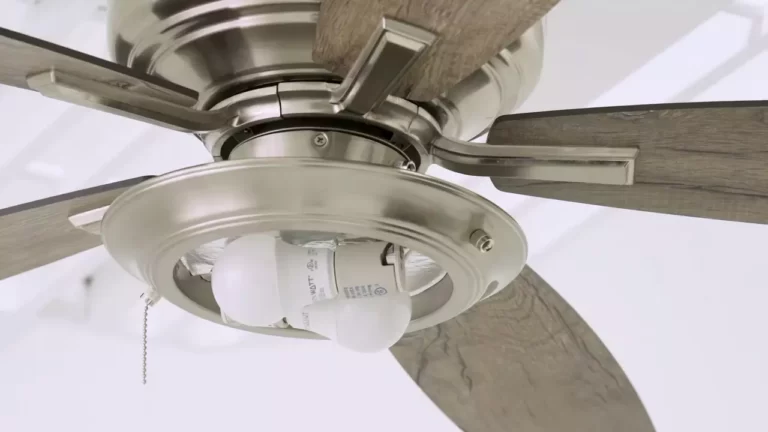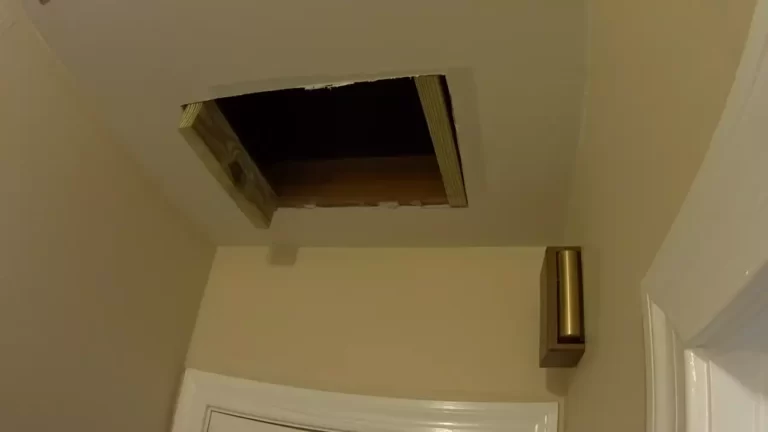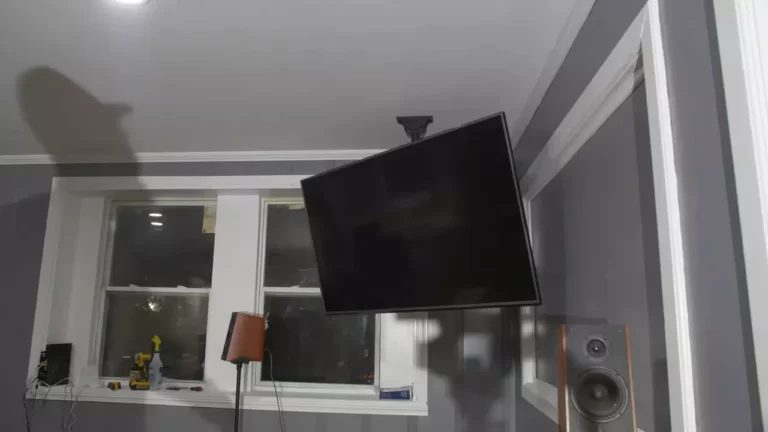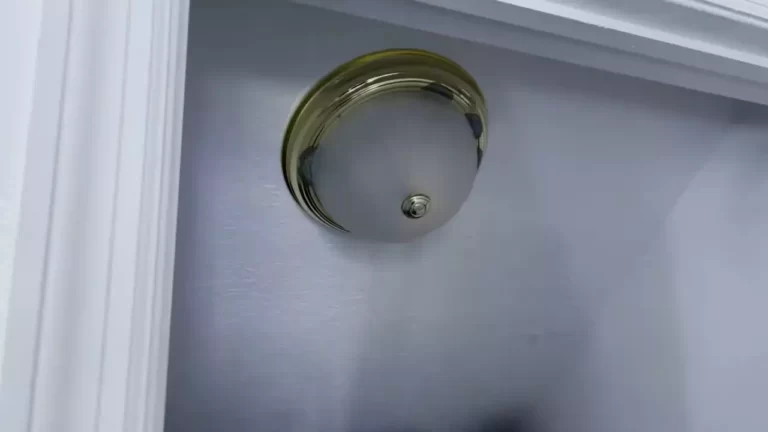How to Install Attic Fan?
To install an attic fan, first, locate a suitable position on the roof and mark the area. Then, using a reciprocating saw, cut a hole in the roof for the fan.
Make sure the hole is the correct size for the fan and install it securely, following the manufacturer’s instructions. Are you interested in improving your home’s ventilation and reducing energy costs? Installing an attic fan can be a practical solution.
This article will guide you on how to properly install an attic fan. By following these steps, you can enjoy better airflow, reduced heat buildup, and improved energy efficiency in your home. Read on to learn more about the installation process and the benefits of having an attic fan.
Factors To Consider When Selecting An Attic Fan
Installing an attic fan is a great way to improve the ventilation in your home, reducing energy costs and making your living space more comfortable. However, with so many options available in the market, it can be overwhelming to select the right attic fan for your needs. To help you with this decision, it is important to consider a few key factors. In this article, we will discuss three important factors you should consider to make an informed choice: size and capacity, noise level, and energy efficiency.

Size and Capacity
The size and capacity of an attic fan are crucial factors to consider when selecting one for your home. An attic fan that is too small may not provide adequate ventilation, while one that is too large might be overkill and waste energy. Thus, it is essential to calculate the appropriate size and capacity based on the square footage of your attic.
An easy way to determine the size of an attic fan is to use the following formula: (attic square footage × 0.7) ÷ 300 = suggested CFM (cubic feet per minute). This calculation will give you an estimate of the airflow required to effectively cool your attic space.
Noise Level
Another important consideration when selecting an attic fan is its noise level. While attic fans are designed to be quiet, some models can still produce noticeable sound, which may be a nuisance if your attic is located near living areas or bedrooms.
To ensure a quiet operation, look for attic fans that are specifically marketed as “quiet” or “silent.” Additionally, check customer reviews and ratings for feedback on noise levels. Keep in mind that more advanced models may come with features like noise-reducing insulation or sound-dampening technology.
Energy Efficiency
Energy efficiency is a crucial factor in today’s eco-conscious world. Selecting an energy-efficient attic fan not only helps reduce your carbon footprint but also saves you money on energy bills. Look for attic fans with high energy efficiency ratings, such as those labeled with the Energy Star logo.
A key metric to consider is the fan’s wattage. The lower the wattage, the more energy-efficient the fan will be. Additionally, consider fans with features such as adjustable thermostat controls or programmable timers, allowing you to optimize usage and conserve energy.
By carefully considering these factors – size and capacity, noise level, and energy efficiency – you can choose the perfect attic fan for your home. Not only will this decision improve ventilation and air circulation, but it will also provide you with a more comfortable living environment while saving on energy costs.
Assessing The Attic Space
Before installing an attic fan, it’s important to assess the attic space to ensure that it is suitable for proper installation and operation. This involves inspecting the insulation, evaluating the ventilation, and preparing the necessary safety gear. Let’s delve into each aspect below:
Insulation Inspection
Begin by examining the insulation in your attic. Proper insulation is crucial for maintaining a comfortable temperature inside your home and preventing the escape of conditioned air. Check for any damaged or insufficient insulation that needs to be addressed before installing the attic fan. This can be done by:
- Looking for any gaps or areas where insulation is compressed or visibly worn
- Ensuring that the insulation meets the recommended R-value for your region
- Repairing or replacing any damaged or inadequate insulation
By addressing insulation issues beforehand, you can optimize the performance of your attic fan and enhance energy efficiency in your home.
Ventilation Evaluation
Next, evaluate the ventilation in your attic. Proper ventilation helps to remove excess heat and moisture, preventing the buildup of harmful condensation and potential damage to the structural integrity of your roof. Here’s what you should consider when assessing your attic’s ventilation:
| Factors to Consider: | What to Look For: |
|---|---|
| Natural Ventilation | Check if there are vents or openings in the attic that allow for the inflow and outflow of air. |
| Blockages | Ensure there are no obstructions such as debris, insulation, or other materials blocking the vents. |
| Ventilation Fan | If your attic already has a ventilation fan, assess its condition and determine if it needs to be repaired or replaced. |
By ensuring adequate ventilation, you can maximize the effectiveness of your attic fan and promote better air circulation throughout your attic and home.

Safety Gear Checklist
Prior to installing the attic fan, it’s essential to assemble the necessary safety gear to ensure a safe and secure installation process. The following checklist will help you gather the required equipment:
- Protective eyewear
- Dust mask or respirator
- Gloves
- Headlamp or flashlight
- Ladder or scaffolding
- Safety harness and anchor points (if applicable)
By wearing the appropriate safety gear, you can minimize the risk of accidents and injuries during the installation of your attic fan.
Gathering The Necessary Tools And Materials
Before you dive into installing an attic fan, it’s crucial to gather all the necessary tools and materials. By being prepared ahead of time, you can streamline the installation process and ensure everything goes smoothly. In this section, we’ll discuss the different components you’ll need, including an attic fan kit, power tools, and electrical components.
Attic Fan Kit
First and foremost, you’ll need an attic fan kit to install in your attic. This kit typically includes the fan itself, as well as any mounting hardware and instructions. Be sure to choose a fan that suits the size and layout of your attic for optimal ventilation. Look for a kit that aligns with the specific requirements of your home.
Power Tools
To securely install the attic fan, you’ll also need a few power tools. These tools will help you with tasks such as cutting a hole in your attic wall or roof, and securing the fan in place. Here are some power tools you may require:
| Power Tools | Quantity |
|---|---|
| Power drill | 1 |
| Jigsaw | 1 |
| Tape measure | 1 |
| Screwdriver | 1 |
Electrical Components
In addition to the attic fan and power tools, you’ll need specific electrical components to complete the installation. These components may vary depending on the type of fan you’re installing and your local electrical codes. Here are some common electrical components to consider:
- Electrical wire
- Electrical tape
- Wire connectors
- Electrical box
- Circuit breaker
- Grounding wire
Remember, it’s crucial to consult a professional electrician if you’re unsure about any electrical components or the installation process. Ensuring the electrical connections are safe and up to code is essential for both your safety and the longevity of the fan.
By gathering all the necessary tools and materials ahead of time, you’ll be well-prepared to tackle the installation of your attic fan.

Preparing The Attic For Installation
Before installing an attic fan, it is important to prepare the attic space adequately. This involves clearing debris and obstacles, locating and marking the fan placement, and assessing the wiring requirements. By taking these steps, you can ensure a smooth and successful installation. Let’s explore each of these tasks in detail.
Clearing Debris and Obstacles
The first step in preparing the attic for an attic fan installation is to clear any debris and obstacles that may hinder the process. Start by removing any loose insulation, dirt, or dust. This will not only create a cleaner working environment but also prevent these materials from clogging the fan in the future.
Additionally, check for any obstacles such as plumbing pipes, electrical wires, or structural elements that may obstruct the fan’s installation. You may need to reposition or adjust these objects to make way for the fan’s placement.
Locating and Marking the Fan Placement
Once the attic is clear of debris and obstacles, the next step is to determine the ideal location for the attic fan. This decision should be based on factors such as the attic’s layout, ventilation needs, and proximity to electrical sources.
- Start by identifying the central area of the attic where maximum airflow can be achieved. This will typically be near the highest point of the roof.
- Using a stud finder or measuring from existing structures (such as rafters or joists), mark the desired location for the fan. Ensure it is centered and aligned with the roof’s ridge for optimal ventilation.
Assessing the Wiring Requirements
Before proceeding with the installation, it is crucial to assess the wiring requirements for the attic fan. This involves checking the availability of a nearby power source and evaluating the electrical capacity to support the fan and its associated controls.
If a power source is not readily accessible, it may be necessary to install new electrical wiring or consult a professional electrician for assistance.
Furthermore, ensure that the electrical circuit can handle the additional load of the attic fan without exceeding its capacity. This will prevent potential hazards such as tripped breakers or overloaded circuits.
By thoroughly preparing the attic space for installation, you can set a solid foundation for a properly functioning attic fan. Clearing debris and obstacles, locating the ideal fan placement, and assessing the wiring requirements are essential steps that contribute to a successful installation process. Once completed, you’ll be one step closer to enjoying improved ventilation and energy efficiency in your home.
Installing The Fan
Once you have chosen the right attic fan for your home, it is time to start the installation process. Installing an attic fan may seem like a daunting task at first, but with the right tools and a step-by-step approach, you can tackle it successfully. In this section, we will guide you through the process of cutting a hole for the fan, mounting the fan on the roof, and wiring and electrical connections.
Cutting a Hole for the Fan
The first step in installing an attic fan is to cut a hole in your attic ceiling. To ensure proper ventilation, it is crucial to select the right location for the fan. Here is a step-by-step guide to help you:
- Identify the area on the ceiling where you want to install the fan. It is generally recommended to place the fan near the center of the attic for optimal airflow.
- Locate the ceiling joists using a stud finder. This will help you avoid cutting into them while creating the hole.
- Measure the dimensions of the fan and mark the outline on the ceiling using a pencil or marker.
- Double-check the measurements to ensure accuracy.
- With a jigsaw or reciprocating saw, carefully cut along the marked outline to create the hole.
- Remove any insulation or debris from the hole and clean the area.
Mounting the Fan on the Roof
Once you have successfully cut the hole for the fan, the next step is to mount it on the roof. Follow these steps to complete this part of the installation:
- Position the fan on the roof, aligning it with the hole you created in the attic ceiling.
- Secure the fan to the roof using screws or mounting brackets. Ensure that the fan is properly centered and level.
- Tighten the screws or bolts to securely fasten the fan to the roof.
- Apply a generous amount of roofing sealant around the edges of the fan to prevent any potential leaks.
- Allow the sealant to dry completely before proceeding to the next step.
Wiring and Electrical Connections
Now that the fan is securely mounted on the roof, it is time to connect the wiring and make the necessary electrical connections. Here’s how you can do it:
- Locate the nearest electrical source in your attic. This can be an existing electrical circuit or a dedicated circuit.
- Turn off the power supply to the attic to ensure safety during the wiring process.
- Run electrical cables from the power source to the fan location.
- Connect the black wire from the fan to the hot wire of the electrical circuit.
- Connect the white wire from the fan to the neutral wire of the electrical circuit.
- Secure the connections with wire nuts and wrap them with electrical tape for added protection.
Once the wiring and electrical connections are complete, turn on the power supply and test the attic fan to ensure it is functioning properly. Congratulations, you have successfully installed an attic fan!

Testing And Troubleshooting
Testing and troubleshooting are important steps when it comes to installing an attic fan. These steps ensure that everything is functioning correctly and any issues are addressed promptly. In this section, we will cover three key areas of testing and troubleshooting: verifying power supply, checking fan operation, and addressing common issues. By following these steps, you can ensure that your attic fan is installed properly and working efficiently.
Verifying Power Supply
Before testing the fan operation, it is essential to verify that you have a stable power supply. This involves checking the electrical connections and ensuring that the fan is receiving the correct voltage. To verify the power supply, follow these steps:
- Turn off the power from the main electrical panel to avoid any electrical accidents.
- Remove the attic fan cover to access the wiring and electrical connections.
- Using a multimeter, check the voltage at the fan’s wiring terminals. Ensure that the reading matches the required voltage mentioned in the manufacturer’s instructions.
- If the voltage is incorrect or absent, check the circuit breaker and wiring connections to identify any issues.
- Resolve any electrical issues before proceeding with the fan installation.
Checking Fan Operation
Once you have verified the power supply, the next step is to check the fan’s operation. This will ensure that the fan is working correctly and effectively ventilating your attic. To check the fan’s operation, follow these steps:
- Turn on the power to the fan from the main electrical panel.
- Listen for any unusual sounds coming from the fan. A well-functioning fan should operate quietly without any grinding or rattling noises.
- Observe the movement of the fan blades to ensure they are spinning smoothly and evenly.
- Check if the fan is effectively pulling in air from the attic and expelling it outside. You can feel the airflow near the exhaust vent or use a smoke pencil to visualize the airflow.
- If there are any issues with the fan’s operation, it may indicate a faulty motor or a problem with the fan blades. In such cases, refer to the manufacturer’s troubleshooting guide or contact a professional for assistance.
Addressing Common Issues
Even with proper installation and testing, attic fans may encounter common issues that need addressing. Here are a few problems you might come across and how to resolve them:
| Common Issue | Solution |
|---|---|
| The fan is not turning on. |
|
| The fan is running continuously. |
|
| Inconsistent or weak airflow. |
|
By addressing these common issues and resolving them promptly, you can ensure that your attic fan operates efficiently and provides optimal ventilation for your home. Remember to refer to the manufacturer’s instructions and seek professional help if needed to troubleshoot any complex issues.
Cleaning And Inspecting The Fan
Regular cleaning and inspection of your attic fan is crucial for its optimal performance and longevity. Over time, dirt and debris can accumulate on the fan blades, causing it to work less efficiently and potentially causing damage. By following these simple steps, you can ensure that your attic fan stays clean and in good working condition.

Removing Dirt and Debris
The first step in cleaning your attic fan is to remove any dirt and debris that may have built up on the fan blades. Start by turning off the power to the fan to avoid any accidents. You can then use a long-handled brush or a vacuum cleaner with a brush attachment to gently clean the blades. Be sure to remove any loose debris that you can see, as this can cause the fan to become unbalanced.
Lubricating Moving Parts
After removing the dirt and debris, it’s important to lubricate the moving parts of the fan to ensure smooth operation. Use a high-quality lubricant such as silicone spray or lightweight oil to lubricate the bearings and motor shaft. Apply a small amount of lubricant to each moving part and spin the blades manually to distribute the lubricant evenly.
Checking for Damage or Loose Connections
Once you have cleaned and lubricated the fan, it’s important to carefully inspect it for any damage or loose connections. Check for any visible signs of damage, such as cracks or bent blades, and make sure that all electrical connections are secure. If you notice any damage or loose connections, it’s important to address them promptly to avoid further issues.
Troubleshooting Common Problems
After installing an attic fan, it is not uncommon to encounter a few hiccups along the way. In this section, we will explore some of the most common problems that may arise and provide troubleshooting solutions. By addressing these issues promptly, you can ensure that your attic fan functions optimally, providing efficient air circulation and helping to keep your home cool.
Fan Not Turning On
If your attic fan is not turning on, there are a few things you can check to identify and rectify the issue:
- Check the power supply: Ensure that the fan is properly plugged in and that the power source is functional.
- Inspect the wiring: Examine the wiring connections to make sure they are secure and not damaged. If you find any loose or frayed wires, tighten them or replace them as needed.
- Test the thermostat: The thermostat controls when the fan turns on and off based on the temperature. Verify that the thermostat is set correctly and functioning properly. Consider replacing it if necessary.
- Check the motor: A faulty motor can prevent the fan from turning on. Inspect the motor for any signs of damage or overheating. If you notice any issues, it may be necessary to replace the motor.
Strange Noises or Vibrations
If you notice unusual noises or vibrations coming from your attic fan, follow these steps to troubleshoot the problem:
- Inspect the fan blades: Ensure that the blades are clean and not obstructed by debris. Clean any accumulated dust or dirt that may be causing the vibrations or strange noises.
- Tighten loose components: Over time, certain components of the fan may become loose, leading to vibrations or rattling sounds. Check and tighten any screws, bolts, or brackets to eliminate these issues.
- Inspect the motor: As with the fan not turning on, a faulty motor can also cause strange noises or vibrations. Examine the motor for any signs of damage or excessive wear. Consider replacing it if necessary.
Inadequate Air Circulation
If you feel that your attic fan is not providing sufficient air circulation, consider the following troubleshooting tips:
- Check the ventilation openings: Ensure that the vents in your attic are clear and not obstructed by insulation or debris. Clear any blockages to allow for proper airflow.
- Assess the fan’s position: The location of the attic fan can have an impact on its effectiveness. Verify that the fan is positioned in an area that allows for optimal air intake and exhaust.
- Consider the fan size: It’s crucial to select a fan that is appropriate for the size of your attic. If your attic is particularly large, you may need to install additional fans or upgrade to a larger fan to achieve adequate air circulation.
By troubleshooting these common problems and implementing the necessary solutions, you can ensure that your attic fan operates smoothly and effectively. Regular maintenance and periodic checks will help you identify any potential issues early on and prevent them from escalating into more significant problems. Enjoy the benefits of a well-functioning attic fan, such as improved energy efficiency and a more comfortable living environment.
Frequently Asked Questions Of How To Install Attic Fan
Can I Install My Own Attic Fan?
Yes, you can install your own attic fan following proper instructions and safety guidelines for optimal performance. It is important to ensure correct wiring, proper ventilation, and suitable fan size for your attic space. Remember to turn off the power before starting any installation work.
Is It Worth Installing An Attic Fan?
Installing an attic fan is worth it. It helps to regulate the temperature in your attic, preventing heat buildup and reducing energy costs. It also improves air circulation, preventing moisture buildup and reducing the risk of mold and mildew.
Where Is The Best Place To Put An Attic Fan?
The best place to install an attic fan is on the roof, near the ridge. This location promotes efficient airflow and eliminates hot air buildup in the attic, reducing energy costs. Proper installation ensures maximum effectiveness and benefits.
How Much Does It Cost To Install An Attic Fan?
The cost of installing an attic fan varies depending on factors such as the size and type of fan, complexity of installation, and location. On average, homeowners can expect to pay between $200 and $800 for both the fan and installation.
Conclusion
Installing an attic fan is a simple and cost-effective way to improve the ventilation in your home. By following the step-by-step instructions outlined in this guide, you can easily install an attic fan without the need for professional assistance. With proper installation, your attic fan will help to decrease your energy costs, reduce the strain on your HVAC system, and improve the overall comfort of your home.
Don’t wait any longer – get started on installing your attic fan today and enjoy the benefits it brings.







